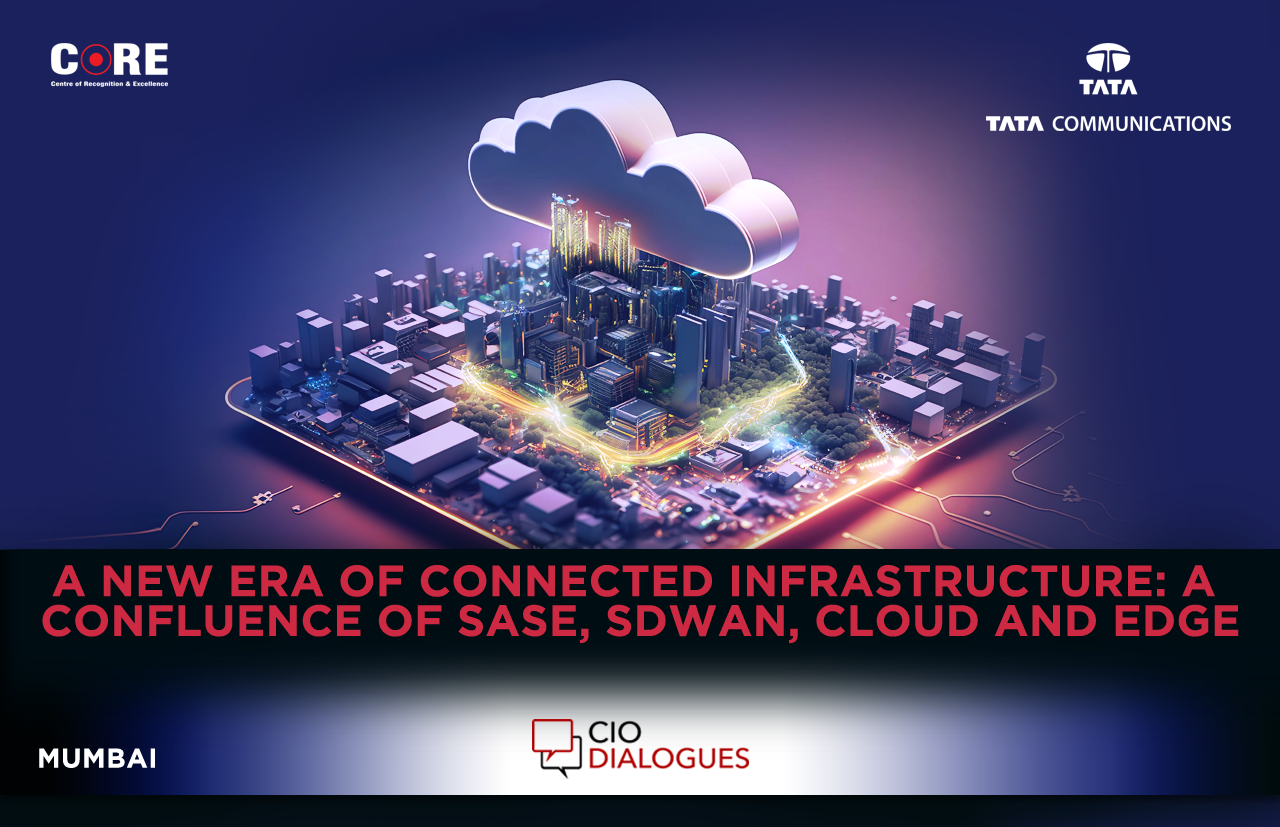Tata Communications’ Executive WeConnect 2023, in association with CORE Media is an annual customer leadership event where industry leaders engage to deliberate and reimagine the future of business. This year, the focus of the event was to help leaders navigate complex challenges as businesses witnessed a shift in models that drove growth and profitability.
Tata Communications leadership explored Hyperconnected Ecosystems. It is a powerful concept characterized by real-time, connectivity, seamless collaboration and intelligence, that will enable enterprises to drive growth using newer business models, deliver superior customer experiences, build agility & efficiency, and manage risk effectively.
Business agility in a hyperconnected ecosystem starts with infrastructure agility. IT infrastructure that is intelligent, autonomous, on-demand, and secure is the foundation of a hyperconnected ecosystem. This infrastructure is called ‘Connected Infrastructure’. Connected infrastructure not only enables cost optimization but also helps businesses respond faster to internal and external changes.
Anoop Mathur, Founder - CORE Media, along with Ayaskant Mohapatra, Chief Information Officer, BOB Financial Solutions; Goutam Datta, Chief Information & Digital Officer, Bajaj Allianz Life; Rahul Sharma, Chief Information Officer, Tata Projects; and Neelakantan Venkataraman, VP and Global Head Edge Business, Tata Communications discussed how organizations are adopting an integrated approach to digital infrastructure by building a programmable, secure and software defined connected infrastructure.
The Key points highlighted by CIOs and digital leaders in this conversation were as follows:
- CIOs are striving to adapt their IT infrastructure to rapidly changing business needs and market dynamics. They require a flexible and agile infrastructure that can be easily provisioned, scaled, and reconfigured to meet evolving demands.
- The journey of infrastructure transformation begins with an assessment of the current IT landscape, identifying business needs and pain points, and defining a clear transformation strategy. CIOs emphasized on modernizing legacy applications, optimizing data storage and management, and enhancing cybersecurity measures for business agility.
- As edge computing becomes increasingly important for organizations in India, CIOs are focused on the development of comprehensive edge adoption strategies to leverage its benefits and integrate it seamlessly with their cloud strategies. CIOs are striking a balance between public cloud, private cloud, and on-premises infrastructure based on their specific needs and priorities like scalability, security, and compliance.


